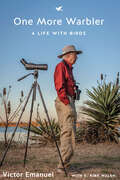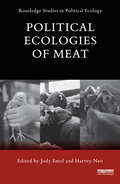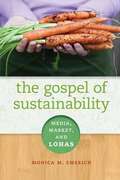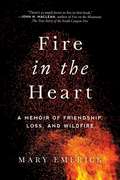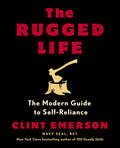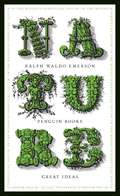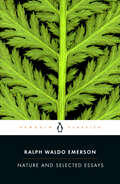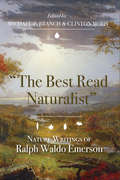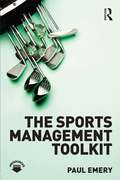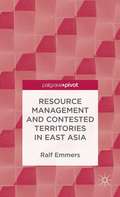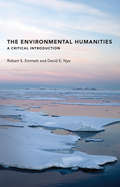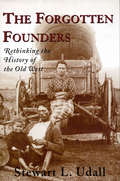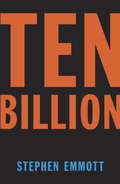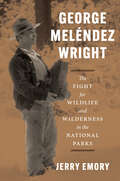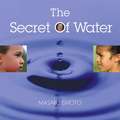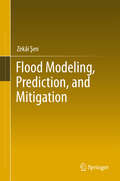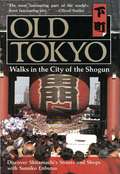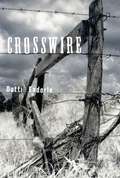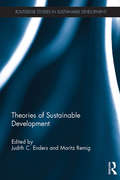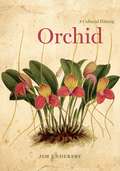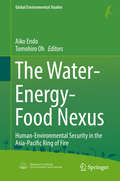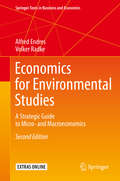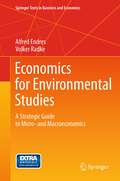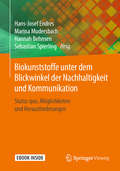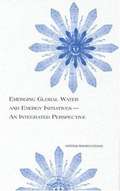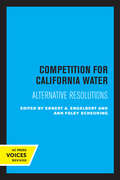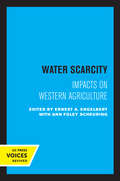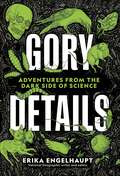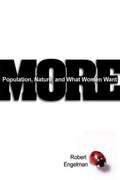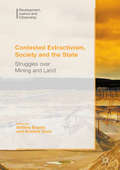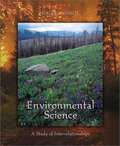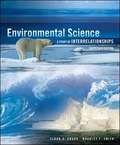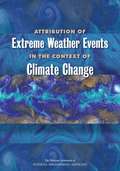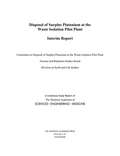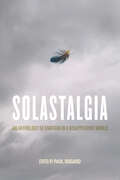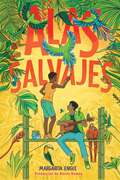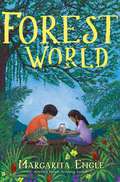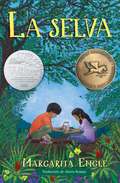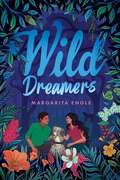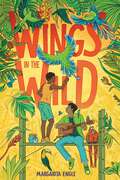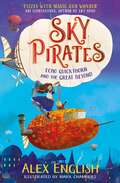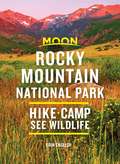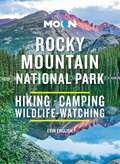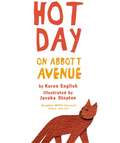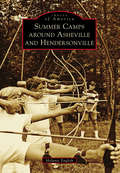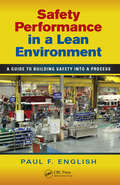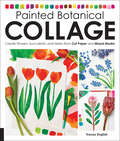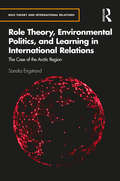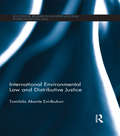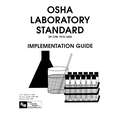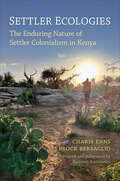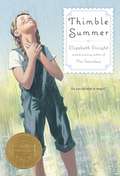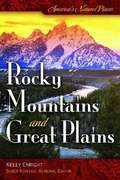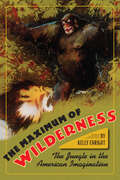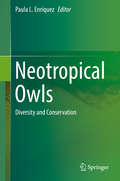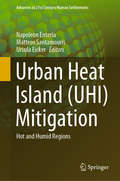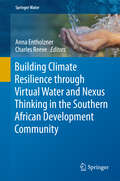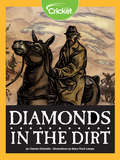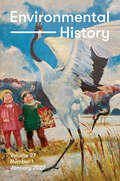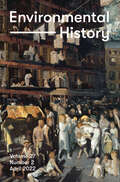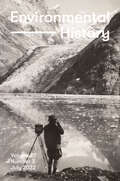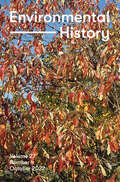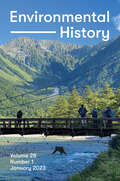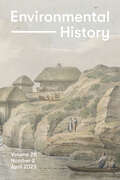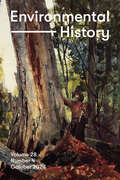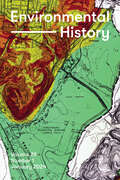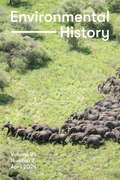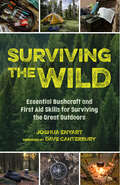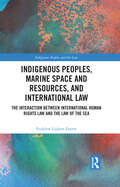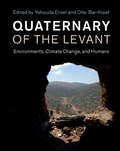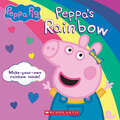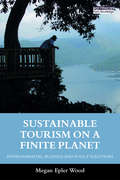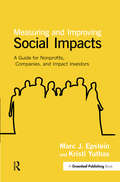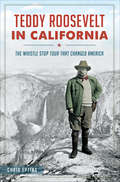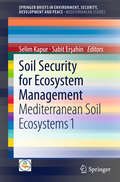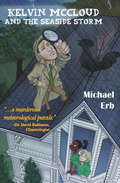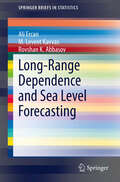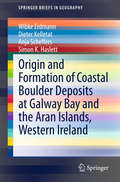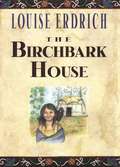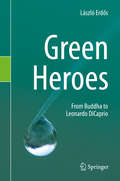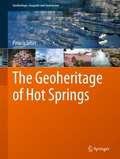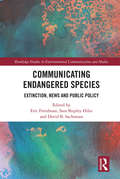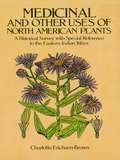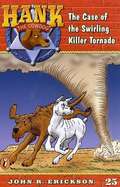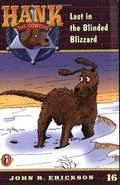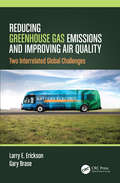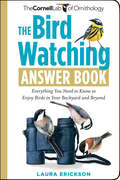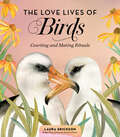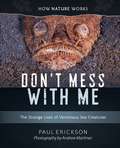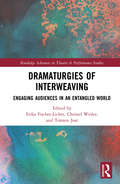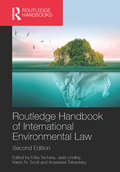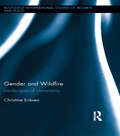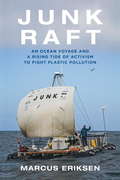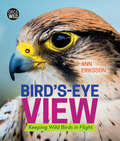One More Warbler: A Life with Birds
by Victor Emanuel S Kirk WalshOne of America’s foremost birders recounts his birding adventures as well as his friendships with numerous luminaries.Victor Emanuel is widely considered one of America’s leading birders. He has observed more than six thousand species during travels that have taken him to every continent. He founded the largest company in the world specializing in birding tours and one of the most respected ones in ecotourism. Emanuel has received some of birding’s highest honors, including the Roger Tory Peterson Award from the American Birding Association and the Arthur A. Allen Award from the Cornell Laboratory of Ornithology. He also started the first birding camps for young people, which he considers one of his greatest achievements.In One More Warbler, Emanuel recalls a lifetime of birding adventures—from his childhood sighting of a male Cardinal that ignited his passion for birds to a once-in-a-lifetime journey to Asia to observe all eight species of cranes of that continent. He tells fascinating stories of meeting his mentors who taught him about birds, nature, and conservation, and later, his close circle of friends—Ted Parker, Peter Matthiessen, George Plimpton, Roger Tory Peterson, and others—who he frequently birded and traveled with around the world. Emanuel writes about the sighting of an Eskimo Curlew, thought to be extinct, on Galveston Island; setting an all-time national record during the annual Audubon Christmas Bird Count; attempting to see the Imperial Woodpecker in northwestern Mexico; and birding on the far-flung island of Attu on the Aleutian chain. Over the years, Emanuel became a dedicated mentor himself, teaching hundreds of young people the joys and enrichment of birding. “Birds changed my life,” says Emanuel, and his stories make clear how a deep connection to the natural world can change everyone’s life.“Whether he is recounting his experiences with raptors in Turkey, rose-ringed parakeets in India, or black-and-white owls in Panama, Emanuel’s love of the natural world is always on display. A charming narrative for avid birders and armchair nature lovers, sure to inspire at least a few flights of fancy.” —Kirkus Reviews“Victor Emanuel is a remarkable man who found his mentors in birding and went on to become a leader in that community for the past fifty years. In One More Warbler, Victor shares his wide-ranging adventures across the globe, including the story of his enormously influential ecotourism company, and the reasons why he become a mentor himself to whole generations of young ornithologists. It’s a fascinating read.” —Kenn Kaufman, author of Kingbird Highway“This book is classic Victor: a tapestry of anecdotes, adventures, philosophical musings, and tributes to people, all woven together by glowing words of admiration for the rich diversity of birds that grace our lives, and define his.” —John Fitzpatrick, Director, Cornell Lab of Ornithology
One More Warbler: A Life with Birds
by Victor Emanuel S Kirk WalshOne of America’s foremost birders recounts his birding adventures as well as his friendships with numerous luminaries.Victor Emanuel is widely considered one of America’s leading birders. He has observed more than six thousand species during travels that have taken him to every continent. He founded the largest company in the world specializing in birding tours and one of the most respected ones in ecotourism. Emanuel has received some of birding’s highest honors, including the Roger Tory Peterson Award from the American Birding Association and the Arthur A. Allen Award from the Cornell Laboratory of Ornithology. He also started the first birding camps for young people, which he considers one of his greatest achievements.In One More Warbler, Emanuel recalls a lifetime of birding adventures—from his childhood sighting of a male Cardinal that ignited his passion for birds to a once-in-a-lifetime journey to Asia to observe all eight species of cranes of that continent. He tells fascinating stories of meeting his mentors who taught him about birds, nature, and conservation, and later, his close circle of friends—Ted Parker, Peter Matthiessen, George Plimpton, Roger Tory Peterson, and others—who he frequently birded and traveled with around the world. Emanuel writes about the sighting of an Eskimo Curlew, thought to be extinct, on Galveston Island; setting an all-time national record during the annual Audubon Christmas Bird Count; attempting to see the Imperial Woodpecker in northwestern Mexico; and birding on the far-flung island of Attu on the Aleutian chain. Over the years, Emanuel became a dedicated mentor himself, teaching hundreds of young people the joys and enrichment of birding. “Birds changed my life,” says Emanuel, and his stories make clear how a deep connection to the natural world can change everyone’s life.“Whether he is recounting his experiences with raptors in Turkey, rose-ringed parakeets in India, or black-and-white owls in Panama, Emanuel’s love of the natural world is always on display. A charming narrative for avid birders and armchair nature lovers, sure to inspire at least a few flights of fancy.” —Kirkus Reviews“Victor Emanuel is a remarkable man who found his mentors in birding and went on to become a leader in that community for the past fifty years. In One More Warbler, Victor shares his wide-ranging adventures across the globe, including the story of his enormously influential ecotourism company, and the reasons why he become a mentor himself to whole generations of young ornithologists. It’s a fascinating read.” —Kenn Kaufman, author of Kingbird Highway“This book is classic Victor: a tapestry of anecdotes, adventures, philosophical musings, and tributes to people, all woven together by glowing words of admiration for the rich diversity of birds that grace our lives, and define his.” —John Fitzpatrick, Director, Cornell Lab of Ornithology
Political Ecologies of Meat (Routledge Studies in Political Ecology)
by Jody Emel Harvey NeoLivestock production worldwide is increasing rapidly, in part due to economic growth and demand for meat in industrializing countries. Yet there are many concerns about the sustainability of increased meat production and consumption, from perspectives including human health, animal welfare, climate change and environmental pollution. This book tackles the key issues of contemporary meat production and consumption through a lens of political ecology, which emphasizes the power relations producing particular social, economic and cultural interactions with non-human nature. Three main topics are addressed: the political ecology of global livestock production trends; changes in production systems around the world and their implications for environmental justice; and existing and emerging governance strategies for meat production and consumption systems and their implications. Case studies of different systems at varying scales are included, drawn from Asia, Africa, the Americas and Europe. The book includes an editorial introduction to set the context and synthesize key messages for the reader.
The Gospel of Sustainability: Media, Market and LOHAS
by Monica M. EmerichFrom organic produce and clothing to socially conscious investing and eco-tourism, the lifestyles of health and sustainability, or LOHAS, movement encompasses diverse products and practices intended to contribute to a more sustainable lifestyle for people and the planet. In The Gospel of Sustainability, Monica M. Emerich explores the contemporary spiritual expression of this green cultural shift at the confluence of the media and the market. This is the first book to qualitatively study the LOHAS marketplace and the development of a discourse of sustainability of the self and the social and natural worlds. Emerich draws on myriad sources related to the notions of mindful consumption found throughout the LOHAS marketplace, including not just products and services but marketing materials, events, lectures, regulatory policies, and conversations with leaders and consumers. These disparate texts, she argues, universally project a spiritual message about personal and planetary health that is in turn reforming capitalism by making consumers more conscious.
Fire in the Heart: A Memoir of Friendship, Loss, and Wildfire
by Mary EmerickFIRE IN THE HEART is a powerful memoir by a woman, once a shy, insecure schoolgirl, who reinvented herself as a professional wildland fire fighter. Determined to forge herself into a stronger, braver person, Mary climbs to heights she never imagined for herself, eventually directing blazes across the country. Filled with literal struggles for survival, tough choices and Mary's burning passion for what she does, Fire in the Heart, is an unflinching account of one woman's relationship with fire. But when she loses someone she loves to the famous Storm King Mountain forest fire in Colorado, which killed fourteen firefighters, Mary faces the hardest choice of her life; to stay in the game or turn back and try to find the woman she used to be. It is both a thrilling memoir about life-threatening work and a meditation on identity, strength, bravery, bonds, and survivor's guilt.
The Rugged Life: The Modern Guide to Self-Reliance
by Clint EmersonBecome self-reliant, live off the land, and be prepared for the unexpected in this modern guide to self-sufficiency and homesteading from New York Times bestselling author, retired Navy SEAL, and survival skills expert Clint Emerson.&“Add The Rugged Life by former Navy SEAL Clint Emerson to your library today and get on the path to independence and self-sufficiency.&”—Jack Carr, Navy SEAL Sniper and #1 New York Times bestselling author of The Devil&’s HandClint Emerson is the go-to expert for surviving the first minutes, hours, and days of a crisis. Now, in The Rugged Life, he works with modern homesteading experts to show you how to thrive over the long-term—for months, years, or even a lifetime—by being prepared and self-sufficient. You can live the Rugged Life completely off-the-grid by farming your own food and using the waste from your toilet for compost. Or, you can live it by adding solar panels to your suburban home and keeping chickens and bees in your backyard. You can even live the Rugged Life in a city by simply gathering the salad for tonight&’s dinner from your windowsill garden. Each of these homesteading and prepper long-term survival skills stand on their own, and taken together, they can help you design the independent life you want for yourself and your family. • Be your own homesteader: Make your own shampoo and face creams; pickle and ferment food; make natural bug spray and cleaning products; smoke meat; tan a hide• Be your own protector: Create a last-resort emergency plan; gather medicinal plants; protect against dangerous animals and threats; understand survival first aid• Be your own provider: Hunt for game; make a gillnet; set snares; forage for wild foods; build a rabbit hutch; ice fish; butcher a pig; keep bees• Be your own builder: Retrofit a van; set up solar, microhydro, and geothermal power; create a water catchment and filtration system; build a shipping container home• Be your own farmer: Grow a victory garden; build a greenhouse; waffle garden to save space and resources; build a root cellar; can, dry, and store crops; operate a tractor With hundreds of step-by-step, illustrated, self-sustaining skills and projects, The Rugged Life is for everyone who feels they can use more adventure, freedom, and choice in their life—everyone ready to get out of their comfort zone and try new, hard, profoundly rewarding things.
Nature (Penguin Great Ideas)
by Ralph EmersonOriginally published anonymously, Nature was the first modern essay to recommend the appreciation of the outdoors as an all-encompassing positive force. Emerson’s writings were recognized as uniquely American in style and content, and launched the idea of going for a walk as a new way of looking at the world. Throughout history, some books have changed the world. They have transformed the way we see ourselves – and each other. They have inspired debate, dissent, war and revolution. They have enlightened, outraged, provoked and comforted. They have enriched lives – and destroyed them. Now Penguin brings you the works of the great thinkers, pioneers, radicals and visionaries whose ideas shook civilization and helped make us who we are.
Nature and Selected Essays
by Ralph Waldo EmersonAn indispensible look at Emerson's influential life philosophyThrough his writing and his own personal philosophy, Ralph Waldo Emerson unburdened his young country of Europe's traditional sense of history and showed Americans how to be creators of their own circumstances. His mandate, which called for harmony with, rather than domestication of, nature, and for a reliance on individual integrity, rather than on materialistic institutions, is echoed in many of the great American philosophical and literary works of his time and ours, and has given an impetus to modern political and social activism.Larzer Ziff's introduction to this collection of fifteen of Emerson's most significant writings provides the important backdrop to the society in which Emerson lived during his formative years.For more than seventy years, Penguin has been the leading publisher of classic literature in the English-speaking world. With more than 1,700 titles, Penguin Classics represents a global bookshelf of the best works throughout history and across genres and disciplines. Readers trust the series to provide authoritative texts enhanced by introductions and notes by distinguished scholars and contemporary authors, as well as up-to-date translations by award-winning translators.
The Best Read Naturalist": Nature Writings of Ralph Waldo Emerson (Under the Sign of Nature: Explorations in Ecocriticism)
by Ralph Waldo Emerson Michael P. Branch Clinton MohsRalph Waldo Emerson is one of the most important figures in American nature writing, yet until now readers have had no book devoted to this central theme in his work. "The Best Read Naturalist" fills this lacuna, placing several of Emerson’s lesser-known pieces of nature writing in conversation with his canonical essays. Organized chronologically, the thirteen selections--made up of sermons, lectures, addresses, and essays--reveal an engagement with natural history that spanned Emerson’s career. As we watch him grapple with what he called the "book of nature," a more environmentally connected thinker emerges--a "green" Emerson deeply concerned with the physical world and fascinated with the ability of science to reveal a correspondence between the order of nature and that of the mind. "The Best Read Naturalist" illuminates the vital influence that the study of natural history had on the development of Emerson’s mature philosophy.
The Collected Works of Ralph Waldo Emerson Volume I: Nature, Addresses, and Lectures
by Ralph Waldo Emerson Alfred R. Ferguson Robert E. Spiller Waldron P. BelknapRecords the creative and intellectual development of Emerson as a man of letters through a collection of his writings.
The Sports Management Toolkit
by Paul EmeryThe Sports Management Toolkit is a practical guide to the most important management tools and techniques available to those working in the sport and leisure industries. Designed to bridge the gap between the classroom and the workplace, it includes ten free-standing chapters, each of which provides a detailed introduction to best practice in one of the core sports management disciplines. Written in a clear and straightforward style, and free of management jargon, the book covers all the key functional areas of contemporary sports management, including: marketing performance management risk management human resource management project management finance. Each chapter includes a detailed, step-by-step description of the key tools and techniques and their application; a ‘real world’ case study to demonstrate the technique in action, plus an extensive guide to further resources and a series of self-test questions. The final chapter offers an extended, integrated case-study, demonstrating how all the key management techniques are combined within the everyday operation of a successful sport or leisure organization. This book is essential reading for all students of sport and leisure management, and for all managers looking to improve their professional practice.
Resource Management and Contested Territories in East Asia
by Ralf EmmersRalf Emmers discusses the significance of natural resources as a source of inter-state cooperation and competition in East Asia, assessing whether the joint exploration and development of resources can act as a means to reduce tensions in contested territories. Does the joint management of natural resources in the absence of a negotiated maritime delimitation constitute a feasible strategy to de-escalate maritime sovereignty disputes in East Asia? Can cooperative resource exploitation be separated from nationalist considerations and power politics calculations? Alternatively, should the prospect for joint exploration in disputed waters be expected to raise rather than defuse territorial conflicts, especially if abundant resources are eventually discovered? If this were true, should exploration schemes be postponed until sovereignty disputes have been resolved? Emmers addresses these questions by examining the overlapping sovereignty claims in the Sea of Japan and the East and South China Seas.
The Environmental Humanities: A Critical Introduction (The\mit Press Ser. #1)
by Robert S. Emmett David E. NyeA concise overview of this multidisciplinary field, presenting key concepts, central issues, and current research, along with concrete examples and case studies.The emergence of the environmental humanities as an academic discipline early in the twenty-first century reflects the growing conviction that environmental problems cannot be solved by science and technology alone. This book offers a concise overview of this new multidisciplinary field, presenting concepts, issues, current research, concrete examples, and case studies. Robert Emmett and David Nye show how humanists, by offering constructive knowledge as well as negative critique, can improve our understanding of such environmental problems as global warming, species extinction, and over-consumption of the earth's resources. They trace the genealogy of environmental humanities from European, Australian, and American initiatives, also showing its cross-pollination by postcolonial and feminist theories. Emmett and Nye consider a concept of place not synonymous with localism, the risks of ecotourism, and the cultivation of wild areas. They discuss the decoupling of energy use and progress, and point to OECD countries for examples of sustainable development. They explain the potential for science to do both good and harm, examine dark visions of planetary collapse, and describe more positive possibilities—alternative practices, including localization and degrowth. Finally, they examine the theoretical impact of new materialism, feminism, postcolonial criticism, animal studies, and queer ecology on the environmental humanities.
The Forgotten Founders: Rethinking The History Of The Old West
by David Emmons Stewart L. UdallIn The Forgotten Founders, Stewart Udall draws on his vast knowledge of and experience in the American West to make a compelling case that the key players in western settlement were the sturdy families who travelled great distances across forbidding terrain to establish communities there. He offers an illuminating and wide-ranging overview of western history and those who have written about it, challenging conventional wisdom on subjects ranging from Manifest Destiny to the importance of Eastern capitalists to the role of religion in westward settlement.Stewart Udall argues that the overblown and ahistorical emphasis on a "wild west" has warped our sense of the past. For the mythical Wild West, Stewart Udall substitutes a compelling description of an Old West, the West before the arrival of the railroads, which was the home place for those he calls the "wagon people," the men and women who came, camped, settled, and stayed. He offers a portrait of the West not as a government creation or a corporate colony or a Hollywood set for feckless gold seekers and gun fighters but as primarily a land where brave and hardy people came to make a new life with their families. From Native Americans to Franciscan friars to Mormon pioneers, these were the true settlers, whose goals, according to Stewart Udall were "amity not conquest; stability, not strife; conservation, not waste; restraint, not aggression." The Forgotten Founders offers a provocative new look at one of the most important chapters of American history, rescuing the Old West and its pioneers from the margins of history where latter-day mythmakers have dumped them. For anyone interested in the authentic history of the American West, it is an important and exciting new work.
Ten Billion
by Stephen EmmottA VINTAGE ORIGINALJust over two hundred years ago, there were one billion humans on Earth.There are now over seven billion of us.And, sometime this century, the world population will reach at least ten billion.Deforestation. Desertification. Species extinction. Global warming. Growing threats to food and water. The driving issues of our times are the result of one huge problem: Us. As the population continues to grow, our problems will increase. And this means that every way we look at it, a planet of ten billion people is likely to be a nightmare. Stephen Emmott, a scientist whose lab is at the forefront of research into complex natural systems, sounds the alarm. TEN BILLION is a snapshot of our planet, and our species, approaching a crisis, and a stark analysis of where this leaves us. TEN BILLION is not another climate book. TEN BILLION is a book about us.From the Trade Paperback edition.thing but a "green" book. And it's not another book about the climate. TEN BILLION is a book about us.From the Trade Paperback edition.
George Meléndez Wright: The Fight for Wildlife and Wilderness in the National Parks
by Jerry EmoryThe first biography of a visionary biologist whose groundbreaking ideas regarding wildlife and science revolutionized national parks. When twenty-three-year-old George Meléndez Wright arrived in Yosemite National Park in 1927 to work as a ranger naturalist—the first Hispanic person to occupy any professional position in the National Park Service (NPS)—he had already visited every national park in the western United States, including McKinley (now Denali) in Alaska. Two years later, he would organize the first science-based wildlife survey of the western parks, forever changing how the NPS would manage wildlife and natural resources. At a time when national parks routinely fed bears garbage as part of “shows” and killed “bad” predators like wolves, mountain lions, and coyotes, Wright’s new ideas for conservation set the stage for the modern scientific management of parks and other public lands. Tragically, Wright died in a 1936 car accident while working to establish parks and wildlife refuges on the US-Mexico border. To this day, he remains a celebrated figure among conservationists, wildlife experts, and park managers. In this book, Jerry Emory, a conservationist and writer connected to Wright’s family, draws on hundreds of letters, field notes, archival research, interviews, and more to offer both a biography of Wright and a historical account of a crucial period in the evolution of US parks and the wilderness movement. With a foreword by former NPS director Jonathan B. Jarvis, George Meléndez Wright is a celebration of Wright’s unique upbringing, dynamism, and enduring vision that places him at last in the pantheon of the great American conservationists.
George Meléndez Wright: The Fight for Wildlife and Wilderness in the National Parks
by Jerry EmoryThe first biography of a visionary biologist whose groundbreaking ideas regarding wildlife and science revolutionized national parks. When twenty-three-year-old George Meléndez Wright arrived in Yosemite National Park in 1927 to work as a ranger naturalist—the first Hispanic person to occupy any professional position in the National Park Service (NPS)—he had already visited every national park in the western United States, including McKinley (now Denali) in Alaska. Two years later, he would organize the first science-based wildlife survey of the western parks, forever changing how the NPS would manage wildlife and natural resources. At a time when national parks routinely fed bears garbage as part of “shows” and killed “bad” predators like wolves, mountain lions, and coyotes, Wright’s new ideas for conservation set the stage for the modern scientific management of parks and other public lands. Tragically, Wright died in a 1936 car accident while working to establish parks and wildlife refuges on the US-Mexico border. To this day, he remains a celebrated figure among conservationists, wildlife experts, and park managers. In this book, Jerry Emory, a conservationist and writer connected to Wright’s family, draws on hundreds of letters, field notes, archival research, interviews, and more to offer both a biography of Wright and a historical account of a crucial period in the evolution of US parks and the wilderness movement. With a foreword by former NPS director Jonathan B. Jarvis, George Meléndez Wright is a celebration of Wright’s unique upbringing, dynamism, and enduring vision that places him at last in the pantheon of the great American conservationists.
The Secret of Water
by Masaru EmotoDr. Masaru Emoto's stunning water-crystal photographs have enchanted millions of people in his many books. His groundbreaking work has shown that thoughts and words have a direct effect on water- crystal formation, and since our bodies are mostly water, our thoughts and words certainly affect not only ourselves but the world around us. In The Secret of Water, Dr. Emoto brings water's message of love, peace, and hope to the next generation in his first children's book. Entertaining and educational, this book offers an understanding of water that will encourage parents and children alike to value and give thanks to our most precious resource. In 2003 the United Nations proclaimed the years 2005 to 2015 as its International Water for Life Decade, which urges citizens of the world to take individual responsibility to learn all about water. In a time wrought with environmental catastrophes and natural disasters, The Secret of Water shows the necessity of protecting water and offers a message of hope and empowerment. Help us shift consciousness
The Secret of Water
by Masaru EmotoMasaru Emoto's photography and spiritual thinking has enabled us to understand more clearly how our actions effect our environment. His insight into water has reached millions of adults around the world and now, with his first book aimed at children, a younger audience can receive his message and help to lead the world toward healing and progress. This comprehensive, easy-to-understand guide to his theories is attractively packaged for children so they too can learn about the power and hidden messages in water.
Flood Modeling, Prediction and Mitigation
by Zekâi ŞenThis book draws on the author’s professional experience and expertise in humid and arid regions to familiarize readers with the basic scientific philosophy and methods regarding floods and their impacts on human life and property. The basis of each model, algorithm and calculation methodology is presented, together with logical and analytical strategies. Global warming and climate change trends are addressed, while flood risk assessments, vulnerability, preventive and mitigation procedures are explained systematically, helping readers apply them in a rational and effective manner. Lastly, real-world project applications are highlighted in each section, ensuring readers grasp not only the theoretical aspects but also their concrete implementation.
Old Tokyo
by Sumiko Enbutsu Ryosuke Ishida"Sumiko Enbutsu, sure-footed and lively, leads us through Tokyo's old downtown. Sensitive to the character of each varied neighborhood, she brings a sharp eye to its half-hidden history, its traditional shops, and its most appealing restaurants. Old Tokyo is a boon to residents and visitors alike".
Crosswire
by Dotti EnderleWhen an 1883 drought drives free-range cattlemen to shred Texas ranchers' barbed wire fences and steal water, thirteen-year-old Jesse works hard to help while dealing with his father and brothers falling-out and his own fear of guns.
Theories of Sustainable Development (Routledge Studies in Sustainable Development)
by Judith C. Enders Moritz RemigWhile sustainability has become a buzzword in discussions about the environment and development, work on theories of sustainable development has received much less attention. However, theory is vital as understanding the origins and development of the concept is the key to achieving successful implementation of sustainability. This book offers an interdisciplinary collection of research articles on the theories of sustainable development, drawing on a wide range of subjects including history, politics, governance, complex systems, economics and philosophy. It advocates viewing sustainable development not only as the establishment of a permanent, globally practicable and future-capable mode of life and economics, but as a complex array of problems involving a wide range of social-scientific and humanistic disciplines. This innovative approach means that the book is oriented toward current problems, not toward the established academic boundaries, and it draws out lessons that are relevant for those studying and working in sustainability across the world. This book will be of great interest to researchers and students of sustainable development and environmental politics, as well as practitioners working with sustainable development in politics, business, administration, and civil society organizations.
Orchid: A Cultural History
by Jim EndersbyAt once delicate, exotic, and elegant, orchids are beloved for their singular, instantly recognizable beauty. Found in nearly every climate, the many species of orchid have carried symbolic weight in countless cultures over time. The ancient Greeks associated them with fertility and thought that parents who ingested orchid root tubers could control the sex of their child. During the Victorian era, orchids became deeply associated with romance and seduction. And in twentieth-century hard-boiled detective stories, they transformed into symbols of decadence, secrecy, and cunning. What is it about the orchid that has enthralled the imagination for so many centuries? And why do they still provoke so much wonder? Following the stories of orchids throughout history, Jim Endersby divides our attraction to them into four key themes: science, empire, sex, and death. When it comes to empire, for instance, orchids are a prime example of the exotic riches sought by Europeans as they shaped their plans for colonization. He also reveals how Charles Darwin's theory of evolution became intimately entangled with the story of the orchid as he investigated their methods of cross-pollination. As he shows, orchids--perhaps because of their extraordinarily diverse colors, shapes, and sizes--have also bloomed repeatedly in films, novels, plays, and poems, from Shakespeare to science fiction, from thrillers to elaborate modernist novels. Featuring many gorgeous illustrations from the collection of the Royal Botanic Gardens, Kew, Orchid: A Cultural History tells, for the first time, the extraordinary story of orchids and our prolific interest in them. It is an enchanting tale not only for gardeners and plant collectors, but anyone curious about the flower's obsessive hold on the imagination in history, cinema, literature, and more.
The Water-Energy-Food Nexus: Human-environmental Security In The Asia-pacific Ring Of Fire (Global Environmental Studies)
by Aiko Endo Tomohiro OhThis book highlights the water-energy-food nexus as one of the most important and fundamental global environmental issues facing the world. Climate and social changes are putting increased pressure on water, energy and food resources. As water is the central aspect within this cluster, the book focuses on the inherent tradeoffs in water resources between producing/consuming energy and food. In addition, it discusses an inter- and trans-disciplinary approach to understanding the complexity of the water-energy-food nexus system, and creating policy options to reduce the tradeoffs among resources. The content integrates a variety of academic disciplines, including not only the natural sciences (e.g. hydrology, coastal oceanography, costal aquatic bioscience, fisheries, environmental earth science etc.) but also the humanities and social sciences (e.g. marine policy, environmental energy policy, resource governance, policy process theory etc.). The book can be used as a textbook for undergraduate and graduate-level sustainability science courses. Further, its practical content and trans-disciplinary approach to addressing nexus issues with stakeholders offers vital information for practitioners and administrators alike.
Economics for Environmental Studies: A Strategic Guide to Micro- and Macroeconomics (Springer Texts in Business and Economics)
by Alfred Endres Volker RadkeThis textbook provides a concise introduction to micro- and macroeconomics and demonstrates how economic tools and approaches can be used to analyze environmental issues. Written in an accessible style without compromising depth of the analysis, central issues in the public policy debate on environmental problems and environmental policy are discussed and analyzed from an economics perspective. The book is meant as an introductory (and in some parts intermediate) text for undergraduate students in environmental sciences without a background in economics. It also serves as a companion for economists interested in a presentation of the micro and macro foundations of environmental economics, in a nutshell.The second edition has been revised, updated and extended in may ways, for instance by adding a microeconomic section on environmental technical change, a discussion of the significance of technical change for a sustainable development and a considerably extended macroeconomic section on economic growth.
Economics for Environmental Studies: A Strategic Guide to Micro- and Macroeconomics (Springer Texts in Business and Economics)
by Alfred Endres Volker RadkeAn understanding of fundamental economic concepts is essential for students in environmental studies programs around the world. The present textbook addresses their needs, providing a concise introduction to micro- and macroeconomics and demonstrating how these economic tools and approaches can be used to analyze environmental issues. Written in an accessible style without compromising depth of the analysis, central issues in the public policy debate on environmental problems and environmental policy are discussed and analyzed from an economics perspective.The book is meant both as an introductory text for undergraduate students in environmental sciences without a background in economics, and as a companion for economists interested in a presentation of the micro and macro foundations of environmental economics, in a nutshell.
Biokunststoffe unter dem Blickwinkel der Nachhaltigkeit und Kommunikation: Status quo, Möglichkeiten und Herausforderungen
by Hans-Josef Endres Marina Mudersbach Hannah Behnsen Sebastian SpierlingDas Buch zeigt, wie eine Nachhaltigkeitsbewertung von Biokunststoffen gelingen kann und wie die Ergebnisse einer solchen Bewertung ausfallen. Es analysiert die öffentliche Wahrnehmung beim Verbraucher sowie die politischen Rahmenbedingungen von Biokunststoffen.
Emerging Global Water and Energy Initiatives-- An Integrated Perspective
by Global Energy Water Cycle Experiment Gewex PanelThe National Academies Press (NAP)--publisher for the National Academies--publishes more than 200 books a year offering the most authoritative views, definitive information, and groundbreaking recommendations on a wide range of topics in science, engineering, and health. Our books are unique in that they are authored by the nation's leading experts in every scientific field.
Competition for California Water: Alternative Resolutions
by Ernest A. Engelbert Ann Foley ScheuringCalifornia’s water is at the center of an intense economic and political struggle. A balance between supply and demand must be reached, but it is far from certain that all Californians will get as much water as they want at a price they feel is right. Competition for California Water presents essential information on key issues, including: Costs: What would be the yields and what would be the costs, in dollars as well as less tangible values, of developing new sources of water? Cost-sharing: How much of the cost of water development and distribution should be borne by the general public, and how much by water users and other beneficiaries? Environmental protection: To what extent should environmental values be protected? Conservation: To what extent can the need for new water development be offset by conservation and more efficient use of water? Institutional reform: Can changes in the laws and institutions of California produce a more efficient system of water supply and management? Agriculture: How much increase in cost and/or loss of water can California agriculture bear and still remain competitive? Thirty-one experts on all aspects of this topic project alternative futures for California’s water supply. Written in nontechnical language, Competition for California Water is an invaluable source of information for Californians concerned with the future of their state.This title is part of UC Press's Voices Revived program, which commemorates University of California Press’s mission to seek out and cultivate the brightest minds and give them voice, reach, and impact. Drawing on a backlist dating to 1893, Voices Revived makes high-quality, peer-reviewed scholarship accessible once again using print-on-demand technology. This title was originally published in 1982.
Water Scarcity: Impacts on Western Agriculture
by Ernest A. Engelbert Ann Foley ScheuringAgricultural production in the semi-arid western United States is dependent on irrigation. Population in the seventeen western states has been and is expected to continue increasing. Groundwater levels are declining throughout the region with long-term pumping and increased demands leading to greater pumping lifts and costs, land subsidence, and salt water intrusion into groundwater basins. Construction and operation costs of future water development in these states will be great, both in dollars and in economic and social effects. Competition for the available water supply due to increased demands in both agricultural and non-agricultural sectors continues to increase. Although considerable attention has been given to some aspects of declining water supplies for irrigated agriculture in particular areas, this is the first volume to adress in a comprehensive manner the effects of scarce water supplies on agricultural production and the resultant impacts at regional, state, national, and international levels. Over seventy experts, representing all the major physical and social sciences as well as industries examine the issues and conclude that important decisions must be made at all levels of government and private enterprise if the prosperity and quality of life in the region are to be maintained. Specific technical, economic, institutional, and managerial solutions are recommended to forestall an impending water crisis. All segments of society--agriculturalists, urbanites, food processors, land developers, environmentalists, and others--have major stakes in the outcome of any action for future water supplies and distribution in the West. This title is part of UC Press's Voices Revived program, which commemorates University of California Press's mission to seek out and cultivate the brightest minds and give them voice, reach, and impact. Drawing on a backlist dating to 1893, Voices Revived makes high-quality, peer-reviewed scholarship accessible once again using print-on-demand technology. This title was originally published in 1984.
Gory Details: Adventures From The Dark Side Of Science
by Erika EngelhauptUsing humour and real science in the tradition of Mary Roach, this groovy narrative from the author of National Geographic's popular Gory Details blog illuminates the gross, strange, morbid, and outright absurd realities of our bodies, our earth, and our universe. Filled to the brim with far-out facts, this wacky, funny, and informative narrative takes us on a fascinating journey through the astonishing world of science. With Erika Engelhaupt, founding editor of National Geographic's Gory Details blog, as your guide, all your weirdest and wildest fascinations will be illuminated. From the biologist who endured countless honeybee stings to test which spot was the most painful to the dollhouse-sized replicas of crime scenes built to analyze blood splatter to NASA's enduring dilemma--do women need to have their periods in space?--this entertaining book explores oft-ignored but alluring facets of biology, anatomy, space exploration, nature, and more. Featuring top-notch reporting, interviews with leading researchers in the field, and a healthy dose of wit, Gory Details depicts the world's most intriguing real-world applications of science in all their glory--making geekiness cool all over again!
More: Population, Nature and What Women Want
by Robert EngelmanIn the capital of Ghana, a teenager nicknamed "Condom Sister" trolls the streets to educate other young people about contraception. Her work and her own aspirations point to a remarkable shift not only in the West African nation, where just a few decades ago women had nearly seven children on average, but around the globe. While world population continues to grow, family size keeps dropping in countries as diverse as Switzerland and South Africa. The phenomenon has some lamenting the imminent extinction of humanity, while others warn that our numbers will soon outgrow the planet's resources. Robert Engelman offers a decidedly different vision--one that celebrates womens' widespread desire for smaller families. Mothers aren't seeking more children, he argues, but more for their children. If they're able to realize their intentions, we just might suffer less climate change, hunger, and disease, not to mention sky-high housing costs and infuriating traffic jams. In More, Engelman shows that this three-way dance between population, womens' autonomy, and the natural world is as old as humanity itself. He traces pivotal developments in our history that set population--and society--on its current trajectory, from hominids' first steps on two feet to the persecution of 'witches' in Europe to the creation of modern contraception. Both personal and sweeping, More explores how population growth has shaped modern civilization --and humanity as we know it. The result is a mind-stretching exploration of parenthood, sex, and culture through the ages. Yet for all its fascinating historical detail, More is primarily about the choices we face today. Whether society supports women to have children when and only when they choose to will not only shape their lives, but the world all our children will inherit.
Contested Extractivism, Society and the State: Struggles over Mining and Land (Development, Justice and Citizenship)
by Bettina Engels Kristina DietzThis book empirically discusses recent struggles over land and mining, exploring state-society relations conflicts on various scales. In contrast with the existing literature, analyses in this volume deliberately focus on large-scale land use changes both in relation to the expansion of industrial mining and to agro-industry. The authors contend that there are significant parallels between contestations over different variants of resource extractivism, as they reflect the same global trends and processes. Chapters draw on critical theoretical approaches from political ecology, political economy, spatial theory, contentious politics, and the study of democracy. The authors not only provide empirical insights on actual resource struggles from different world regions based on in-depth field research, but also contribute to theory-building by linking concepts from various critical approaches to one another, developing a perspective for analysing struggles over resources related to current global crisis phenomena.
Environmental Science: A Study of Interrelationships Eighth edition
by Eldon D. Enger Bradley F. SmithEnvironmental Science is an interdisciplinary field. Because environmental disharmonies occur as a result of the interaction between humans and the natural world, we must include both when seeking solutions to environmental problems.
Environmental Science: A Study of Interrelationships (Thirteenth Edition)
by Eldon D. Enger Bradley F. SmithThe book provides information and the conceptual framework needed to understand complex issues so that readers can comprehend the nature of environmental problems and formulate their own views.
Attribution of Extreme Weather Events in the Context of Climate Change
by Engineering Medicine National Academies of SciencesAs climate has warmed over recent years, a new pattern of more frequent and more intense weather events has unfolded across the globe. Climate models simulate such changes in extreme events, and some of the reasons for the changes are well understood. Warming increases the likelihood of extremely hot days and nights, favors increased atmospheric moisture that may result in more frequent heavy rainfall and snowfall, and leads to evaporation that can exacerbate droughts. Even with evidence of these broad trends, scientists cautioned in the past that individual weather events couldn’lt be attributed to climate change. Now, with advances in understanding the climate science behind extreme events and the science of extreme event attribution, such blanket statements may not be accurate. The relatively young science of extreme event attribution seeks to tease out the influence of human-cause climate change from other factors, such as natural sources of variability like El Niño, as contributors to individual extreme events. Event attribution can answer questions about how much climate change influenced the probability or intensity of a specific type of weather event. As event attribution capabilities improve, they could help inform choices about assessing and managing risk, and in guiding climate adaptation strategies. This report examines the current state of science of extreme weather attribution, and identifies ways to move the science forward to improve attribution capabilities.
Disposal of Surplus Plutonium at the Waste Isolation Pilot Plant: Interim Report
by Engineering Medicine National Academies of SciencesDisposal of Surplus Plutonium at the Waste Isolation Pilot Plant: Interim Report evaluates the general viability of the U.S. Department of Energy’s National Nuclear Security Administration’s (DOE-NNSA’s) conceptual plans for disposing of 34 metric tons (MT) of surplus plutonium in the Waste Isolation Pilot Plant (WIPP), a deep geologic repository near Carlsbad, New Mexico. This report evaluates DOE-NNSA’s plans to ship, receive, and emplace surplus plutonium in WIPP and its understanding of the impacts of these plans on WIPP and WIPP-bound waste streams. This report, the first of two to be issued during this study, provides a preliminary assessment of the general viability of DOE-NNSA’s conceptual plans, focusing on some of the barriers to their implementation.
Solastalgia: An Anthology of Emotion in a Disappearing World
by Laura Erin England Kathryn Nuernberger Kathryn Miles Suzanne Roberts Joan Naviyuk Kane Meera Subramanian Lauren K. Alleyne Roopali Phadke Cynthia Belmont Angela Pelster Nickole Brown Sean Hill Holly Haworth Kathleen Dean Moore J. Drew Lanham Genevieve Guenther Ken Hada Susan Clayton Priscilla Solis Ybarra Ben Goldfarb Douglas Haynes Leah Naomi Green Jennifer Westerman Erica Cavanagh Priya Shukla Marco Wilkinson Paul Bogard Janisse Ray Jennifer Atkinson Elena Passarello Taylor Brorby Sarah Jaquette Ray Alison Hawthorne Deming Scott Russell Sanders"One of the penalties of an ecological education," wrote Aldo Leopold, "is that one lives alone in a world of wounds." As climate change and other environmental degradations become more evident, experts predict that an increasing number of people will suffer emotional and psychological distress as a result. Many are feeling these effects already. In the pages of Solastalgia, they will find a source of companionship, inspiration, and advice.The concept of solastalgia comes from the Australian philosopher Glenn Albrecht, who describes it as "the homesickness we feel while still at home." It’s the pain and longing we feel as we realize the world immediately around us is changing, with our love for that world serving as a catalyst for action on its behalf.This powerful anthology brings together thirty-four writers—educators, journalists, poets, and scientists—to share their emotions in the face of environmental crisis. They share their solastalgia, their beloved places, their vulnerability, their stories, their vision of what we can create.
Alas salvajes (Wings in the Wild)
by Margarita Engle¡Ahora disponible in español!Los seres alados han de ser libres. Y también lo han de ser los artistas, pero el gobierno cubano ha criminalizado cualquier arte que no tenga su aprobación. Soleida y sus padres protestan contra esta injusticia con su jardín secreto de esculturas de aves encadenadas. Luego, un huracán derriba las paredes y deja al descubierto el arte ilegal, y sus padres son arrestados... Soleida huye sola a Centroamérica y se une a miles de refugiados cubanos varados en Costa Rica mientras buscan asilo en cualquier otro sitio. Ahí, conoce a Dariel, un muchacho cubanoamericano cuya música enigmática hechiza a las aves, a los animales… y a Soleida. Juntos trabajan para proteger el medioambiente y atraer la atención del mundo hacia los artistas presos en Cuba. Pronto descubren que el amor no consta de caer rendido, sino de volar juntos hacia nuevas alturas. Pero las alas pueden ser frágiles, y Soleida y Dariel vienen de mundos diferentes. ¿Acaso ese futuro mejor por el que luchan incluirá la posibilidad de que estén juntos?
Forest World
by Margarita EngleFrom award-winning author Margarita Engle comes a lively middle grade novel in verse that tells the story of a Cuban-American boy who visits his family’s village in Cuba for the first time—and meets a sister he didn’t know he had.Edver isn’t happy about being shipped off to Cuba to visit the father he barely knows. The island is a place that no one in Miami ever mentions without a sigh, but travel laws have suddenly changed, and now it’s a lot easier for divided families to be reunited. Technology in Cuba hasn’t caught up with the times, though, and Edver is expecting a long, boring summer. He was NOT expecting to meet a sister he didn’t know he had. Luza is a year older and excited to see her little brother, until she realizes what a spoiled American he is. Looking for something—anything—they might have in common, the siblings sneak onto the Internet, despite it being forbidden in Cuba, and make up a fake butterfly. Maybe now their cryptozoologist mother will come to visit. But their message is intercepted by a dangerous poacher, and suddenly much more than their family is at stake. Edver and Luza have to find a way to overcome their differences to save the Cuban jungle that they both have grown to love.
La selva (Forest World)
by Margarita EngleNow in Spanish, award-winning author Margarita Engle’s lively middle grade novel in verse about a Cuban-American boy who visits his family’s village in Cuba for the first time—and meets a sister he didn’t know he had. <P><P>Edver isn’t happy about being shipped off to Cuba to visit the father he barely knows. Yet now that travel laws have changed and it’s a lot easier for divided families to be reunited, his mom thinks it's time for some father-son bonding. <P><P>Edver doesn’t know what this summer has in store, but he’s definitely not expecting to meet a sister he didn’t know existed! Luza is a year older and excited to see her little brother, until she realizes how different their lives have been. Looking for anything they might have in common, they sneak onto the internet—and accidentally catch the interest of a dangerous wildlife poacher. Edver has fought plenty of villains in video games. Now, to save the Cuban jungle they love, he and Luza are going to have to find a way to conquer a real villain! <P><P>A Edver no le hace ninguna gracia que lo envíen a Cuba a ver al padre que apenas conoce. Sin embargo, ahora que las leyes de viaje han cambiado y es mucho más fácil reunir a las familias divididas, su mamá piensa que es hora de que padre e hijo pasen tiempo juntos. Edver no se imagina lo que le depara el verano, ¡pero definitivamente no espera conocer a la hermana que ni siquiera sabía que existía! <P><P>Luza es un año mayor y está muy entusiasmada por conocer a su hermanito, hasta que se da cuenta de cuán diferentes han sido sus vidas. A la busca de cualquier cosa que puedan tener en común, se meten en internet y accidentalmente atraen la atención de un peligroso cazador de animales salvajes. Edver ha luchado contra muchísimos villanos en los videojuegos. <P><P>Ahora, para salvar la selva que tanto quieren, ¡Luza y él tendrán que encontrar un modo de derrotar a un villano real!
Wild Dreamers
by Margarita EngleIn this stirring young adult romance from award-winning author Margarita Engle, love and conservation intertwine as two teens fight to protect wildlife and heal from their troubled pasts.Ana and her mother have been living out of their car ever since her militant father became one of the FBI&’s most wanted. Leandro has struggled with debilitating anxiety since his family fled Cuba on a perilous raft. One moonlit night, in a wilderness park in California, Ana and Leandro meet. Their connection is instant—a shared radiance that feels both scientific and magical. Then they discover they are not alone: a huge mountain lion stalks through the trees, one of many wild animals whose habitat has been threatened by humans. Determined to make a difference, Ana and Leandro start a rewilding club at their school, working with scientists to build wildlife crossings that can help mountain lions find one another. If pumas can find their way to a better tomorrow, surely Ana and Leandro can too.
Wings in the Wild
by Margarita EngleThis gorgeously romantic contemporary novel-in-verse from award-winning author Margarita Engle tells the inspiring love story of two teens fighting for climate action and human rights.Winged beings are meant to be free. And so are artists, but the Cuban government has criminalized any art that doesn&’t meet their approval. Soleida and her parents protest this injustice with their secret sculpture garden of chained birds. Then a hurricane exposes the illegal art, and her parents are arrested. Soleida escapes to Central America alone, joining the thousands of Cuban refugees stranded in Costa Rica while seeking asylum elsewhere. There she meets Dariel, a Cuban American boy whose enigmatic music enchants birds and animals—and Soleida. Together they work to protect the environment and bring attention to the imprisoned artists in Cuba. Soon they discover that love isn&’t about falling—it&’s about soaring together to new heights. But wings can be fragile, and Soleida and Dariel come from different worlds. They are fighting for a better future—and the chance to be together.
Sky Pirates: Echo Quickthorn and the Great Beyond (Sky Pirates #1)
by Alex EnglishTake to the skies in this thrilling new series from author Alex English. (BEWARE: THERE WILL BE PIRATES!) 11 year-old Echo Quickthorn has grown up believing that nothing exists outside the Kingdom of Lockfort, but everything changes when an eccentric professor parks his airship outside her window armed with a map that shows all the magical places that exist beyond the city walls. Together with her pet lizard, Gilbert, Echo sets off on an incredible adventure to find her missing mother; an adventure that will take her to unimaginable places filled with giant butterflies, mechanical dragons and . . . sky pirates!Praise for Sky Pirates: Echo Quickthorn and the Great Beyond: "Fizzes with magic and wonder" – Abi Elphinstone, bestselling author of SKY SONG "A charmingly madcap adventure, with endearing friendships, sparkling wit, and a swashbuckling journey across pirate-infested skies. I loved it. Perfect for fans of Nevermoor and Cogheart." – Hana Tooke, author of THE UNADOPTABLES &“A spirited protagonist, a charming side-kick and a believable villain come together in this tightly plotted, visual, treat for the senses. I want to soar over the rainbow rooftops of Port Tourbillon and the toadstooled forests of Tyrian in my very own airship.&” – Nizrana Farook, author of THE GIRL WHO STOLE AN ELEPHANT &“Sky Pirates is a fast-moving adventure story full of intrepid explorers, ingenious inventors, stolen treasure and mysterious undiscovered lands. If you like Chitty Chitty Bang Bang (and who doesn't?) you'll love Sky Pirates too!&” Kirsty Applebaum, author of THE MIDDLER "From the very first page, I felt as if I'd been grabbed by the hand by a best friend and taken on the journey of a lifetime. Pacey, thrilling and endearing too. If I was ever to encounter sky pirates, I can think of no one I'd want by my side more than clever, brave Echo." – Joanna Nadin, author of the RACHEL RILEY series &“A breath-taking adventure and a wonderfully imagined story of friendship and danger in strange places.&” – Claire Fayers, author of THE VOYAGE TO MAGICAL NORTH "An incredible adventure, brimming with friendship and danger" – The Bookseller
Moon Rocky Mountain National Park: Hike, Camp, See Wildlife (Travel Guide)
by Erin EnglishHike to stunning glaciers and waterfalls, savor the solitude of the mountains, and sleep under the stars: an unforgettable adventure awaits with Moon Rocky Mountain National Park. Inside you'll find:Flexible Itineraries: Unique and adventure-packed ideas ranging from one day in the park to a week-long trip, with tips for family fun, winter adventures, and visiting all the glaciersThe Best Hikes in Rocky: Detailed trail descriptions with mileage, elevation gains, individual trail maps, and backpacking optionsExperience the Outdoors: Hike the dramatic glacier-formed gorges to find jaw-dropping waterfalls and spot elk, moose, and bighorn sheep along the way. Join in on a summertime ranger program, snowshoe to a ghost town in the winter, or catch the annual Perseid meteor shower in August. Take an adventurous bike tour, try your hand at rock climbing or fishing, and set up camp for a night under the stars (and a spectacular sunrise, too!)How to Get There: Up-to-date information on gateway towns, park entrances, park fees, and toursWhere to Stay: From campgrounds to B&Bs to the iconic Stanley Hotel, find the best spots to kick back, both inside and outside the parkPlanning Tips: When to go, what to pack, safety information, and how to avoid the crowds, with full-color photos and detailed maps throughoutExpertise and Know-How from seasoned explorer and Rocky Mountain local Erin EnglishExperience the magnificent natural beauty of Colorado's Rockies with Moon Rocky Mountain National Park.Visiting more of North America's national parks? Try Moon Zion & Bryce or Moon Yellowstone & Grand Teton. Trying to hit them all? Check out Moon USA National Parks.
Moon Rocky Mountain National Park: Hiking, Camping, Wildlife-Watching (Moon National Parks Travel Guide)
by Erin EnglishHike to stunning glaciers and waterfalls, savor the solitude of the mountains, and sleep under the stars: an unforgettable adventure awaits with Moon Rocky Mountain National Park. Inside you'll find:Flexible Itineraries: Unique and adventure-packed ideas ranging from one day in the park to a week-long trip, with tips for family fun, winter adventures, and visiting all the glaciers The Best Hikes in Rocky: Detailed trail descriptions with mileage, elevation gains, individual trail maps, and backpacking options Experience the Outdoors: Hike the dramatic glacier-formed gorges to find jaw-dropping waterfalls and spot elk, moose, and bighorn sheep along the way. Snowshoe to a ghost town in the winter, hit the trail in autumn for stunning fall color, or catch the annual Perseid meteor shower in August. Take an adventurous bike tour, try your hand at rock climbing or fishing, and set up camp for a night under the stars (and a spectacular sunrise, too!) How to Get There: Up-to-date information on gateway towns, park entrances, park fees, and tours Where to Stay: From campgrounds to B&Bs to the iconic Stanley Hotel, find the best spots to kick back, both inside and outside the park Planning Tips: When to go, what to pack, safety information, and how to avoid the crowds, with full-color photos and detailed maps throughout Expertise and Know-How from seasoned explorer and Rocky Mountain expert Erin English Experience the magnificent natural beauty of Colorado's Rockies with Moon Rocky Mountain National Park. Visiting more of North America's national parks? Try Moon Zion & Bryce or Moon Yellowstone & Grand Teton. Trying to hit them all? Check out Moon USA National Parks. About Moon Travel Guides: Moon was founded in 1973 to empower independent, active, and conscious travel. We prioritize local businesses, outdoor recreation, and traveling strategically and sustainably. Moon Travel Guides are written by local, expert authors with great stories to tell—and they can't wait to share their favorite places with you. For more inspiration, follow @moonguides on social media.
Hot Day on Abbott Avenue
by Karen EnglishIt's the hottest, stickiest day of the summer. A fat-sun-in-the-sky day. An eating-ice-pops-on-the-porch day. And for Kishi and Renée, it's a best-friends-breakup day. Each girl sits on her own front porch, waiting for the other to apologize, even though they know they'll never speak to each other again, no matter how bored they get. But then the sounds of feet slapping the pavement and voices chanting double-dutch rhymes drift up the avenue, and neither one can resist going out in the street to play.
Summer Camps around Asheville and Hendersonville (Images of America)
by Melanie EnglishHistorically, western North Carolina has been a haven for summer camps, sustaining one of the highest concentrations of summer camps in America. For generations, the natural beauty, rustic terrain, and cool climates of the southern Appalachian Mountains have attracted campers from around the world. In the last decades of the 19th century, the summer camp movement arose in the Northeast in response to industrial era concerns about the waning of traditional values and new child development theories. By the turn of the 20th century, the first residential summer camps had emerged around the popular resort towns of Asheville, Hendersonville, Brevard, Black Mountain, and Lake Lure, North Carolina. Founded on lakeshores surrounded by woodlands, these camps offered an array of activities, such as archery, canoeing, horseback riding, swimming, and woodcraft, that instilled lifelong lessons in youth and forged lasting friendships. Today, many of the same camp traditions like council rings and campfire stories are still passed along each summer. Readers will recognize familiar cabins and lakefronts with nostalgia in this collection of vintage photographs.
Safety Performance in a Lean Environment: A Guide to Building Safety into a Process (Occupational Safety & Health Guide Series)
by Paul F. EnglishAs changing customer demands and shifting world markets continue to put a strain on businesses in all sectors, your business needs every advantage to stay competitive. Many people may think of Lean processes as suitable only for the manufacturing floor, but that couldn't be further from the truth. Safety Performance in a Lean Environment: A Guide t
Painted Botanical Collage: Create Flowers, Succulents, and Herbs from Cut Paper and Mixed Media
by Tracey EnglishWith Painted Botanical Collage, artists of all skill levels will learn to create lifelike botanical artwork—featuring flowers, succulents, and herbs—using painted background papers and elegant collage techniques. A unique technique book, Painted Botanical Collage will show you how to create your own collage materials. This guide takes you step by step through creating mixed-media painted papers, then using them—along with tissue paper, art papers, and found paper, such as magazines—to create perfect collage materials. Cut these decorative papers into plant and flower parts to assemble your designs, adding details using various media.Working from nature is central to this technique—look closely at the palettes and shapes in actual flowers to create realistic stylized representations. Painted Botanical Collage includes instruction on creating flowers, cacti, succulents, leaves, and other popular botanicals—over 30 beautiful designs in all. Join in the fun as British artist Tracey English shares the methods behind the magical flower collages that charm and delight her Instagram followers.
Role Theory, Environmental Politics, and Learning in International Relations: The Case of the Arctic Region (Role Theory and International Relations)
by Sandra EngstrandIn this book, Sandra Engstrand uses role theory to study learning processes in environmental policy negotiations in the Arctic Council. Owing to rapid ice-melting in the Arctic region, and more accessible commercial opportunities, there is a greater need for environmental protection. However, large sections of the Arctic fall under state jurisdiction, often causing tensions to arise that prevent any cooperation from achieving fully efficient environmental protection. To enhance our understanding on how states learn about environmental norms, Engstrand examines negotiation processes on environmental protection for the prevention of Arctic marine oil spills and the reduction of short-lived climate pollutants. Through interviews with state representatives and through text analyses of nearly twenty years of meetings between Senior Arctic Officials from each of the eight Arctic states, Engstrand suggests that learning on environmental norms runs firstly through a learning of roles in international relations. She demonstrates how member states develop through self-reflection and by considering the expectation of others, concluding that states’ wishes to preserve their social role in a group and to be perceived as Arctic ‘cooperators’ are drivers for a social education on environmental norms. A timely and unmatched volume Role Theory, Environmental Politics, and Learning in International Relations will engage students and academic researchers in international relations, environmental governance, and Arctic politics.
International Environmental Law and Distributive Justice: The Equitable Distribution of CDM Projects under the Kyoto Protocol (Routledge Research in International Environmental Law)
by Tomilola Akanle Eni-IbukunThe Clean Development Mechanism (CDM) is widely regarded as one of the Kyoto Protocol’s best creations and as an essential part of the international climate change regime. The CDM has been constantly evolving to ensure that it fulfils its objectives of mitigating climate change and contributing to sustainable development in developing countries. The over 6,000 registered projects under the CDM are estimated to have generated almost US$200 billion of investment in developing countries and are expected to achieve GHG emission reductions of about 6.8 billion tonnes. Nevertheless, the CDM is not perfect, and one of its main problems is the inequitable geographic distribution of projects among developing countries. Understandably, this is a problem that countries are very keen to address, and since 2001, even before the first project was registered, countries have been highlighting the need to ensure that projects are equitably distributed among participating countries. This book looks at distributive justice under the CDM regime and focuses on the issue of equity in the geographic distribution of CDM projects among developing countries. The book investigates relevant aspects of international law to identify the legal characteristics of equitable distribution or distributive justice, in order to establish what equitable distribution in the CDM should look like. Based on these investigations, Tomilola Akanle Eni-Ibukun breaks new ground in defining equitable distribution under the CDM and exploring how key obstructions to the equitable distribution of projects may be overcome. The book will be of particular interest to academics and policymakers of climate change and the CDM within international law.
Osha Laboratory Standard - Implementation Guide
by Richard EnnisThis manual contains four major components: 1) An easy-to-follow discussion of the Standard's requirements, along with a plan for implementing management responsibilities; 2) A fill-in schedule for assigning key responsibilities and establishing deadlines; 3) A copy of the OSHA Lab Standard for easy reference; 4) A Chemical Hygiene Plan that has been developed in accordance with the requirements of paragraph (e) of the Standard.
Settler Ecologies: The Enduring Nature of Settler Colonialism in Kenya
by Charis Enns Brock BersaglioSettler Ecologies tells the story of how settler colonialism becomes memorialized and lives on through ecological relations. Drawing on eight years of research in Laikipia, Kenya, Charis Enns and Brock Bersaglio use immersive methods to reveal how animals and plants can be enrolled in the reproduction of settler colonialism. The book details how ecological relations have been unmade and remade to enable settler colonialism to endure as a structure in this part of Kenya. It describes five modes of violent ecological transformation used to prolong structures of settler colonialism: eliminating undesired wild species; rewilding landscapes with more desirable species to settler ecologists; selectively repeopling wilderness to create seemingly more inclusive wild spaces and capitalize on biocultural diversity; rescuing injured animals and species at risk of extinction to shore up moral support for settler ecologies; and extending settler ecologies through landscape approaches to conservation that scale wild spaces. Settler Ecologies serves as a cautionary tale for future conservation agendas in all settler colonies. While urgent action is needed to halt global biodiversity loss, this book underscores the need to continually question whether the types of nature being preserved advance settler colonial structures or create conditions in which ecologies can otherwise be (re)made and flourish.
Thimble Summer
by Elizabeth EnrightA few hours after nine-year-old Garnet Linden finds a silver thimble in the dried-up riverbed, the rains come and end the long drought on the farm. The rains bring safety for the crops and the livestock, and money for Garnet's father. Garnet can't help feeling that the thimble is a magic talisman, for the summer proves to be interesting and exciting in so many different ways. <P><P>There is the arrival of Eric, an orphan who becomes a member of the Linden family; the building of a new barn; and the county fair at which Garnet's carefully tended pig, Timmy, wins a blue ribbon. Every day brings adventure of some kind to Garnet and her best friend, Citronella. As far as Garnet is concerned, the thimble is responsible for each good thing that happens during this magic summer--her thimble summer.
America's Natural Places: Rocky Mountains And Great Plains
by Kelly EnrightFrom Rocky Mountain National Park in Colorado to the Tallgrass Prairie National Preserve in Kansas, this volume provides a snapshot of the most spectacular and important natural places in the Great Plains and Rocky Mountains.
The Maximum of Wilderness: The Jungle in the American Imagination
by Kelly EnrightDanger in the Congo! The unexplored Amazon! Long perceived as a place of mystery and danger, and more recently as a fragile system requiring our protection, the tropical forest captivated America for over a century. In The Maximum of Wilderness, Kelly Enright traces the representation of tropical forests--what Americans have typically thought of as "jungles"--and their place in both our perception of "wildness" and the globalization of the environmental movement.In the early twentieth century, jungle adventure--as depicted by countless books and films, from Burroughs’s Tarzan novels to King Kong--had enormous mass appeal. Concurrent with the proliferation of a popular image of the jungle that masked many of its truths was the work of American naturalists who sought to represent an "authentic" view of tropical nature through museums, zoological and botanical gardens, books, and film. Enright examines the relationship between popular and scientific representations of the forest through the lives and work of Martin and Osa Johnson (who with films such as Congorilla and Simba blended authenticity with adventure), as well as renowned naturalists John Muir, William Beebe, David Fairchild, and Richard Evans Schultes. The author goes on to explore a startling shift at midcentury in the perception of the tropical forest--from the "jungle," a place that endangers human life, to the "rain forest," a place that is itself endangered.
Chiapas: Reconciling Agriculture and Ecology
by Juan Enriquez Ray A. GoldbergChiapas: Reconciling Agriculture and Ecology by Ray A. Goldberg and Juan Enriquez-Cabot
Neotropical Owls
by Paula L. EnriquezThis book presents a comprehensive biological and ecological information about owls in the neotropic area. In addition the book covers topics such as threats and conservation strategies for these nocturnal birds of prey from 18 Neotropical countries. Owls are a good example of diversification processes and have developed evolutionary characteristics themselves. These species are found almost everywhere in the world but most of them are distributed in tropical areas and about a third of them live in the Neotropics. This biogeographic region has a high biodiversity and even share lineages of species from other continents because at some point all were part of Pangea. Although we still have much to know and understand about this diverse, scarcely studied and threatened group this work aims to be a precedent for future and further research on the subject.
Urban Heat Island: Hot and Humid Regions (Advances in 21st Century Human Settlements)
by Napoleon Enteria Matteos Santamouris Ursula EickerThis book discusses the concepts and technologies associated with the mitigation of urban heat islands (UHIs) that are applicable in hot and humid regions. It presents several city case studies on how UHIs can be reduced in various areas to provide readers, researchers, and policymakers with insights into the concepts and technologies that should be considered when planning and constructing urban centres and buildings. The rapid development of urban areas in hot and humid regions has led to an increase in urban temperatures, a decrease in ventilation in buildings, and a transformation of the once green outdoor environment into areas full of solar-energy-absorbing concrete and asphalt. This situation has increased the discomfort of people living in these areas regardless of whether they occupy concrete structures. This is because indoor and outdoor air quality have both suffered from urbanisation. The development of urban areas has also increased energy consumption so that the occupants of buildings can enjoy indoor thermal comfort and air quality that they need via air conditioning systems. This book offers solutions to the recent increase in the number of heat islands in hot and humid regions.
Building Climate Resilience through Virtual Water and Nexus Thinking in the Southern African Development Community (Springer Water)
by Anna Entholzner Charles ReeveThis book puts the spotlight on Southern Africa, presentinga cutting-edge concept never previously explored in the context of climatechange and putting forward arguments for regional integration and cooperation. The Climate Resilient Infrastructure Development Facility (CRIDF) is the newwater infrastructure program of the UK Department for International Development(DFID) for Southern Africa. The CRIDF promotes the establishment of small tomedium-scale infrastructure across the Southern African Development Community(SADC) through technical assistance aimed at developing sustainable pro-poorprojects, while also facilitating access to the financial resources needed todeliver said infrastructure. Further, it focuses on regional water resourcemanagement goals and basin plans, as well as on building climate resilience forthe beneficiary communities. The Facility's Virtual Water and Nexus Projectworks to improve regional peace dividends by translating the Nexus concept intonational and regional policies; it ultimately promotes sovereign securitythrough greater regional integration across the water, food and energy sectors,while taking into account potential benefits in connection with carbonsequestration and emission mitigation.
Diamonds in the Dirt
by Charles EntwistleProspectors are flooding California to mine for gold. After two men show up with bags of diamonds, everyone is ready to start mining for gemstones! Are the diamonds real? Or are they part of a hoax?
Environmental History, volume 27 number 1 (January 2022)
by Environmental HistoryThis is volume 27 issue 1 of Environmental History. Environmental History (EH) is the world’s leading scholarly journal in environmental history and the journal of record in the field. Scholarship published in EH explores the changing relationships between humans and the environment over time. This interdisciplinary journal brings together insights from geography, anthropology, the natural sciences, and many other disciplines to inform historical scholarship.
Environmental History, volume 27 number 2 (April 2022)
by Environmental HistoryThis is volume 27 issue 2 of Environmental History. Environmental History (EH) is the world’s leading scholarly journal in environmental history and the journal of record in the field. Scholarship published in EH explores the changing relationships between humans and the environment over time. This interdisciplinary journal brings together insights from geography, anthropology, the natural sciences, and many other disciplines to inform historical scholarship.
Environmental History, volume 27 number 3 (July 2022)
by Environmental HistoryThis is volume 27 issue 3 of Environmental History. Environmental History (EH) is the world’s leading scholarly journal in environmental history and the journal of record in the field. Scholarship published in EH explores the changing relationships between humans and the environment over time. This interdisciplinary journal brings together insights from geography, anthropology, the natural sciences, and many other disciplines to inform historical scholarship.
Environmental History, volume 27 number 4 (October 2022)
by Environmental HistoryThis is volume 27 issue 4 of Environmental History. Environmental History (EH) is the world’s leading scholarly journal in environmental history and the journal of record in the field. Scholarship published in EH explores the changing relationships between humans and the environment over time. This interdisciplinary journal brings together insights from geography, anthropology, the natural sciences, and many other disciplines to inform historical scholarship.
Environmental History, volume 28 number 1 (January 2023)
by Environmental HistoryThis is volume 28 issue 1 of Environmental History. Environmental History (EH) is the world’s leading scholarly journal in environmental history and the journal of record in the field. Scholarship published in EH explores the changing relationships between humans and the environment over time. This interdisciplinary journal brings together insights from geography, anthropology, the natural sciences, and many other disciplines to inform historical scholarship.
Environmental History, volume 28 number 2 (April 2023)
by Environmental HistoryThis is volume 28 issue 2 of Environmental History. Environmental History (EH) is the world’s leading scholarly journal in environmental history and the journal of record in the field. Scholarship published in EH explores the changing relationships between humans and the environment over time. This interdisciplinary journal brings together insights from geography, anthropology, the natural sciences, and many other disciplines to inform historical scholarship.
Environmental History, volume 28 number 3 (July 2023)
by Environmental HistoryThis is volume 28 issue 3 of Environmental History. Environmental History (EH) is the world’s leading scholarly journal in environmental history and the journal of record in the field. Scholarship published in EH explores the changing relationships between humans and the environment over time. This interdisciplinary journal brings together insights from geography, anthropology, the natural sciences, and many other disciplines to inform historical scholarship.
Environmental History, volume 28 number 4 (October 2023)
by Environmental HistoryThis is volume 28 issue 4 of Environmental History. Environmental History (EH) is the world’s leading scholarly journal in environmental history and the journal of record in the field. Scholarship published in EH explores the changing relationships between humans and the environment over time. This interdisciplinary journal brings together insights from geography, anthropology, the natural sciences, and many other disciplines to inform historical scholarship.
Environmental History, volume 29 number 1 (January 2024)
by Environmental HistoryThis is volume 29 issue 1 of Environmental History. Environmental History (EH) is the world’s leading scholarly journal in environmental history and the journal of record in the field. Scholarship published in EH explores the changing relationships between humans and the environment over time. This interdisciplinary journal brings together insights from geography, anthropology, the natural sciences, and many other disciplines to inform historical scholarship.
Environmental History, volume 29 number 2 (April 2024)
by Environmental HistoryThis is volume 29 issue 2 of Environmental History. Environmental History (EH) is the world’s leading scholarly journal in environmental history and the journal of record in the field. Scholarship published in EH explores the changing relationships between humans and the environment over time. This interdisciplinary journal brings together insights from geography, anthropology, the natural sciences, and many other disciplines to inform historical scholarship.
Surviving the Wild: Essential Bushcraft and First Aid Skills for Surviving the Great Outdoors
by Joshua EnyartThe Ultimate Wilderness Survival Guide“If you are serious about survival, this book is required reading.” ―Alan Kay, winner of Alone, season 1 (History Channel) and coauthor of Decline and Decay: Strategies for Surviving the Coming Unpleasantness#1 Bestseller in Caving & Spelunking and Hiking & Camping InstructionalFormer Special Forces Operator and Instructor, Joshua Enyart, provides essential skills and a step-by-step wilderness survival strategy in his debut bushcraft book, Surviving the Wild.A bushcraft survival and field guide. If you found yourself suddenly thrust into the wild without any modern conveniences like electricity, running water, wi-fi, or Google—would you know what to do? In a pandemic induced post-apocalypse, do you know what your first priority should be? If your caving, camping, or hiking adventure goes haywire, how would you ensure your survival? Written by a former Army Ranger and Green Beret, this survival book provides crucial information alongside a logical, systems-based approach to survival and preparedness.Navigation, tools, first aid, and other survival strategies for the outdoors. Consider this your essential survival guidebook to making it in the wild. With it you’ll learn how to outmaneuver immediate threats, find shelter and nutrition, and navigate to where you want to go. Part first aid book, part survival handbook, Surviving the Wild contains chapters of information on making the most of minimal supplies, finding safe water, and above all—survival!Look inside and you’ll find:A foreword from bestselling bushcraft author Dave CanterburySurvival medicine and edible plant identificationInstructions on how to build a fire, catch game, make a shelter, and more!If you enjoyed survival books like Bushcraft 101, SAS Survival Handbook, How to Stay Alive in the Woods, or The Prepper's Medical Handbook, then you’ll love Surviving the Wild.
Indigenous Peoples, Marine Space and Resources, and International Law: The Interaction Between International Human Rights Law and the Law of the Sea (ISSN)
by Endalew Lijalem EnyewThis book addresses the rights of indigenous peoples to marine space and associated marine resources under international law.Examining the rights of indigenous peoples relating to marine space and marine resources both in international human rights law and the law of the sea, the book provides an in-depth critical analysis of the existing legal framework, whilst identifying the gaps, and possible further mechanisms, for recognizing the rights of indigenous peoples to marine space. The book addresses three main issues: 1) the extent to which international law recognizes and protects the rights of indigenous peoples in relation to marine space and marine resources; 2) if and how the law of the sea and international human rights law pertaining to the rights of indigenous peoples to marine space and marine resources interact; 3) whether and to what extent the law of the sea regime limits the capacity of coastal States to recognize and implement the rights of indigenous peoples relating to marine space and resources. In response, and in a context where indigenous marine rights are under increasing threat, the book develops an important critical theoretical and methodological approach which moves beyond the current doctrinal focus of much existing work in this area.The book will appeal to academics, researchers, and practitioners in the areas of indigenous peoples and the law, international law, the law of the sea, and human rights.
Quaternary of the Levant: Environments, Climate Change, and Humans
by Yehouda Enzel Bar-Yosef OferQuaternary of the Levant presents up-to-date research achievements from a region that displays unique interactions between the climate, the environment and human evolution. Focusing on southeast Turkey, Lebanon, Syria, Jordan and Israel, it brings together over eighty contributions from leading researchers to review 2. 5 million years of environmental change and human cultural evolution. Information from prehistoric sites and palaeoanthropological studies contributing to our understanding of 'out of Africa' migrations, Neanderthals, cultures of modern humans, and the origins of agriculture are assessed within the context of glacial-interglacial cycles, marine isotope cycles, plate tectonics, geochronology, geomorphology, palaeoecology and genetics. Complemented by overview summaries that draw together the findings of each chapter, the resulting coverage is wide-ranging and cohesive. The cross-disciplinary nature of the volume makes it an invaluable resource for academics and advanced students of Quaternary science and human prehistory, as well as being an important reference for archaeologists working in the region.
Peppa's Rainbow (Peppa Pig)
by EOnePeppa visits the biggest, most colorful rainbow ever in this gorgeous 8x8 storybook with a special fact sheet! Based on the hit TV show as seen on Nick Jr.Peppa loves rainbows! She and her friends will discover how rainbows are made in this storybook with a special fact sheet. Will they find a treasure at the rainbow's end?
Sustainable Tourism on a Finite Planet: Environmental, Business and Policy Solutions
by Megan Epler WoodThis book helps all those involved in international tourism develop the new skills, tools and investments required to protect irreplaceable global resources from the impacts of escalating tourism demand over the next 50 years. It documents how technology and the growing global middle class are driving a travel revolution which requires a new paradigm in managing tourism destinations. Travel and tourism supply chains and business models for hotels, tour operators, cruise lines, airlines and airports are analysed and environmental management techniques are proposed for each sector. A pragmatic set of solutions are offered to support the transition to lower impact tourism development worldwide. It recommends that decision makers assess the current and future value of natural, social, and cultural capital to guide investment in destinations and protect vital resources. Case studies illustrate why budgets to protect local destinations are consistently underestimated and offer guidance on new metrics. Innovative approaches are proposed to support the transition to green infrastructure, protect incomparable landscapes, and engage local people in the monitoring of vital indicators to protect local resources. It provides students, professionals, and policy makers with far-reaching recommendations for new educational programs, professional expertise, financing, and legal frameworks to lower tourism’s rapidly escalating carbon impacts and protect the health and well-being of local populations, ecosystems, cultures, and monuments worldwide.
Measuring and Improving Social Impacts: A Guide for Nonprofits, Companies and Impact Investors
by Marc J. Epstein Kristi YuthasIdentifying, measuring and improving social impact is a significant challenge for corporate and private foundations, charities, NGOs and corporations. How best to balance possible social and environmental benefits (and costs) against one another? How does one bring clarity to multiple possibilities and opportunities? Based on years of work and new field studies from around the globe, the authors have written a book for managers that is grounded in the best academic and managerial research.It is a practical guide that describes the steps needed for identifying, measuring and improving social impact. This approach is useful in maximizing the impact of different types of investments, including grants and donations, impact investments, and commercial investments.With numerous examples of actual organizational approaches, research into more than fifty organizations, and extensive practical guidance and best practices, Measuring and Improving Social Impacts fills a critical gap.
Teddy Roosevelt in California: The Whistle Stop Tour That Changed America
by Chris EptingThe camping trip taken by the &“conservationist president&” that put America&’s national parks on the map—from the award-winning author of Roadside Baseball. During his whirlwind 1903 tour of the western states, President Theodore Roosevelt paid his first visit to California. In between the appearances and pageantry, he embarked on three days of epic adventure in the wilderness of Yosemite with the famous and influential naturalist John Muir. A lover of the rugged outdoors, Roosevelt was humbled and impressed by the camping trip, which proved to be one of the most important sojourns in presidential history. Through firsthand accounts, speeches and rare photographs, author Chris Epting tells the story of a great and profound journey that had a lasting effect on conservation history and the National Park System.
Soil Security for Ecosystem Management: Mediterranean Soil Ecosystems 1
by Sabit Erşahin Selim KapurThe term "Soil Security" is used in the context of maintaining the quality and quantity of soil needed in order to ensure continuous supplies of food and fresh water for our society. Topics in this unique book on the management of soil sustainability in the Mediterranean region include: soil information, land degradation, land desertification, pedoenvironments, and the carbon cycle and sequestration. One main focus of the book is the description of new approaches that have been adapted with regards to interdisciplinary soil ecosystem management to combat and mitigate desertification. The contributing authors are renowned experts in their fields which cover the subjects on traditional as well as innovative land use and management.
Kelvin McCloud and the Seaside Storm
by Michael ErbAn anonymous note in the middle of the night, an obituary for a banker who died in a hailstorm, and a mysterious woman vanishing down the stairwell: these clues lead Henry Alabaster and his uncle Kelvin McCloud to a spooky mansion in a coastal town. As a weather detective, Kelvin knows a thing or two about hailstorms, and then strange events surrounding the banker's death suggest foul play. Henry teams up with the fiery, artistic Rachel to help his uncle investigate, and they learn a lot about weather on the way. Nothing--not a thunderstorm, threats, burglary, a baseball bat-wielding suspect, nor even a devastating fire--can keep Henry and his team from chasing down the truth.
Long-Range Dependence and Sea Level Forecasting
by Ali Ercan M. Levent Kavvas Rovshan K. AbbasovThis study shows that the Caspian Sea level time series possess long range dependence even after removing linear trends, based on analyses of the Hurst statistic, the sample autocorrelation functions, and the periodogram of the series. Forecasting performance of ARMA, ARIMA, ARFIMA and Trend Line-ARFIMA (TL-ARFIMA) combination models are investigated. The forecast confidence bands and the forecast updating methodology, provided for ARIMA models in the literature, are modified for the ARFIMA models. Sample autocorrelation functions are utilized to estimate the differencing lengths of the ARFIMA models. The confidence bands of the forecasts are estimated using the probability densities of the residuals without assuming a known distribution. There are no long-term sea level records for the region of Peninsular Malaysia and Malaysia's Sabah-Sarawak northern region of Borneo Island. In such cases the Global Climate Model (GCM) projections for the 21st century can be downscaled to the Malaysia region by means of regression techniques, utilizing the short records of satellite altimeters in this region against the GCM projections during a mutual observation period. This book will be useful for engineers and researchers working in the areas of applied statistics, climate change, sea level change, time series analysis, applied earth sciences, and nonlinear dynamics.
Origin and Formation of Coastal Boulder Deposits at Galway Bay and the Aran Islands, Western Ireland
by Wibke Erdmann Dieter Kelletat Anja Scheffers Simon K. HaslettThis book presents geomorphological and sedimentological aspects of Holocene boulder ridges along the coastline of western Ireland (the Aran Islands and Galway Bay). Given these boulders' size, extent and altitude, they are among the most spectacular deposits moved by marine forces worldwide and have challenged researchers to solve their enigmatic history. In particular, the question of how their features were formed (by storm waves or by tsunamis) is a matter of heated debate. The documentation is based on the authors' own field research, including observations on the boulder transport capacity of six extremely strong winter storms in the 2013/14 season. Discussing the arguments published to date and using more than 130 images for clarity, the book addresses the character, setting and extraordinary size of these boulders moved on land, comparing them with the situation along other exposed coastlines of the world.
The Birchbark House (Birchbark House #1)
by Louise Erdrich<p>Omakayas, a seven-year-old Native American girl of the Ojibwa tribe, lives through the joys of summer and the perils of winter on an island in Lake Superior in 1847. <p>[This text is listed as an example that meets Common Core Standards in English language arts in grades 4-5 at http://www.corestandards.org.]</p>
Green Heroes: From Buddha to Leonardo DiCaprio
by László ErdősThis book provides an introduction into the diversity of the environmental movement through great characters in the green sector. The book describes inspiring personal achievements, and at the same time it provides readers with information regarding the history, the main directions and the ethical principles of the environmental movement. Some of the most important characters of the movement from all around the world, are included in the book. As well as the title characters, Buddha and Leonardo DiCaprio, other famous environmentalists like Albert Schweitzer, David Attenborough and Jane Goodall are discussed. Some of the less well-known but equally important environmentalists such as Chico Mendes, Bruno Manser, Henry Spira, Tom Regan or Rossano Ercolini are highlighted in the various chapters. The selection of characters represents all major branches within the green sector, ranging from medieval saints to Hollywood celebrities, from university professors to field activists, from politicians to philosophers, from ecofeminists to radicals.
The Geoheritage of Hot Springs (Geoheritage, Geoparks and Geotourism)
by Patricia ErfurtThe aim of this book is to provide an overview of topics related to the extensive geoheritage of hot springs, their natural environments, and their integration into commercial and industrial functions. The eleven chapters explore aspects of historical and cultural traditions, geology and geochemistry, research updates, conservation issues and of course health, wellness, and recreation throughout time. Because natural hot springs and active hydrothermal areas play a significant role in the tourism industry, visitor expectations are examined together with an assessment of common hazards and potential risks in active hydrothermal environments, along with recommendations how to stay safe.For the purpose of showcasing certain unique features, to share noteworthy events and developments or to identify concerns associated with the sustainability of natural water source, examples of particular hot spring areas are included in several chapters. One chapter is also dedicated entirely to the protection of natural hot springs and raises awareness for conservation, while another chapter reviews the history of hot springs in great detail to establish a realistic and justifiable timeline of their original use. Lastly, the significance of natural hot springs for various tourism sectors is analysed and the potential for sustainable future destination development in rural and remote regions is discussed.Many locations were considered and invite the reader to use the information as a reference point in the quest to further explore the remarkable natural and cultural geoheritage of hot springs worldwide.
Communicating Endangered Species: Extinction, News and Public Policy (Routledge Studies in Environmental Communication and Media)
by Eric Freedman; Sara Shipley Hiles; David B. SachsmanCommunicating Endangered Species: Extinction, News, and Public Policy is a multidisciplinary environmental communication book that takes a distinctive approach by connecting how media and culture depict and explain endangered species with how policymakers and natural resource managers can or do respond to these challenges in practical terms. Extinction isn’t new. However, the pace of extinction is accelerating globally. The International Union for Conservation of Nature classifies more than 26,000 species as threatened. The causes are many, including climate change, overdevelopment, human exploitation, disease, overhunting, habitat destruction, and predators. The willingness and the ability of ordinary people, governments, scientists, nongovernmental organizations, and businesses to slow this deeply disturbing acceleration are uncertain. Meanwhile, researchers around the world are laboring to better understand and communicate the possibility and implications of extinctions and to discover effective tools and public policies to combat the threats to species survival. This book presents a history of news coverage of endangered species around the world, examining how and why journalists and other communicators wrote what they did, how attitudes have changed, and why they have changed. It draws on the latest research by chapter authors who are a mix of social scientists, communication experts, and natural scientists. Each chapter includes a mass media and/or cultural aspect. This book will be essential reading for students, natural resource managers, government officials, environmental activists, and academics interested in conservation and biodiversity, environmental communication and journalism, and public policy.
Medicinal and Other Uses of North American Plants: A Historical Survey with Special Reference to the Eastern Indian Tribes
by Charlotte Erichsen-BrownChronological historical citations document 500 years of usage of plants, trees, and shrubs native to eastern Canada, northeastern U.S. Also complete identifying information. 343 illustrations. "...this is the best Dover reprint relative to medicinal plants in fifteen years . . . you can't go wrong." -- Botanic & Herb Reviews.
The Case of the Swirling Killer Tornado (Hank the Cowdog Series, #25)
by John R. EricksonAttacked by an invisible enemy, Hank rushes to the house to make sure his family is safe, but the house is in the path of a killer tornado and Hank gets trapped inside the house.
Lost in the Blinded Blizzard (Hank the Cowdog Series, #16)
by John R. EricksonA blizzard shuts down the ranch and Hank is stranded in Slim's cabin. When someone has to deliver Slim's cough medicine to Baby Molly and Slim's truck gets stuck, it's up to Hank.
Reducing Greenhouse Gas Emissions and Improving Air Quality: Two Interrelated Global Challenges
by Larry E. Erickson Gary BraseThe world’s atmosphere is a common resource. Air quality, along with energy, transportation, and climate change have significant impacts on our lives and this book helps readers understand the changes happening at the nexus of these areas, as they relate to reducing greenhouse gas emissions and improving air quality. Discussing the transitions to electric vehicles, solar and wind energy for electricity generation, battery developments, smart grids and electric power management, and progress in the electrification of agricultural technology, it also provides the latest information in the context of the United Nations sustainable development goals and the Paris Agreement on Climate Change. Features: Includes content on how to improve urban air quality in large cities and urban environments. Effectively addresses the nexus of energy, transportation, air quality, climate change and health. Discusses innovative concepts at the nexus of renewable energy, smart grid, electric vehicles, and electric power management. Describes recent progress in meeting the goals of the Paris Agreement on Climate Change and the benefits of reducing greenhouse gas emissions. Written for a wide audience by world experts in sustainability. Reducing Greenhouse Gas Emission and Improving Air Quality: Two Interrelated Global Challenges, is an invaluable book for professionals and academics at the center of changes relating to solar and wind energy, electric vehicles, and charging infrastructure, including government officials, community leaders, researchers, students, and interested citizens. It is also an excellent text for classes that address sustainability, particularly for those focused on transportation and energy.
The Bird Watching Answer Book: Everything You Need to Know to Enjoy Birds in Your Backyard and Beyond
by Laura EricksonLearn the how’s and why’s of bird behavior, from flirtatious mating practices and gorgeous birdsong to flying south for the winter. In this lively reference book, Laura Erickson addresses hundreds of real-life questions sent in to the Cornell Lab of Ornithology, the world’s foremost authority on birds. <P><P> With expert advice on bird watching techniques and equipment, feeding and housing birds, protecting habitats, and much more, Erickson guides you through the intricacies of the avian world with a contagious passion for our feathered friends.
The Love Lives of Birds: Courting and Mating Rituals
by Laura EricksonFrom the lifelong devotion of the American crow to the dalliances of the eastern bluebird, from the bald eagle&’s dazzling aerial display to the male ruby-throated hummingbird&’s reputation as a &“deadbeat dad&” — courtship, mating, and parenting differ dramatically among birds. Ornithologist and author Laura Erickson takes readers on a romance-fueled romp through the love lives of 35 species, exploring the diversity of avian approaches to pairing up. Each species spotlight pairs Erickson&’s remarkable depth of scientific knowledge with her talent for drawing humorous and insightful parallels between human and bird. The result is a riveting read for bird-watchers and nature lovers alike.
Don't Mess With Me: The Strange Lives Of Venomous Sea Creatures (How Nature Works #0)
by Paul Erickson Andrew MartinezThe role of venoms in nature … and in human medicine Why are toxins so advantageous to their possessors as to evolve over and over again? What is it about watery environments that favors so many venomous creatures? Marine biologist Paul Erickson explores these and other questions with astounding images from Andrew Martinez and other top underwater photographers. GREAT for teaching STEM Marine Biology Scorpions and brown recluse spiders are fine as far as they go, but if you want daily contact with venomous creatures, the ocean is the place to be. Blue-ringed octopi, stony corals, sea jellies, stonefish, lionfish, poison-fanged blennies, stingrays, cone snails, blind remipedes, fire urchins—you can choose your poison in the ocean. Venoms are often but not always defensive weapons. The banded sea krait, an aquatic snake, wriggles into undersea caves to prey on vicious moray eels, killing them with one of the world’s most deadly neurotoxins, which it injects through fangs that resemble hypodermic needles.
Dramaturgies of Interweaving: Engaging Audiences in an Entangled World (Routledge Advances in Theatre & Performance Studies)
by Erika Fischer-Lichte, Christel Weiler and Torsten JostDramaturgies of Interweaving explores present-day dramaturgies that interweave performance cultures in the fields of theater, performance, dance, and other arts. Merging strategies of audience engagement originating in different cultures, dramaturgies of interweaving are creative methods of theater and art-making that seek to address audiences across cultures, making them uniquely suitable for shaping people’s experiences of our entangled world. Presenting in-depth case studies from across the globe, spanning Australia, China, Germany, India, Iran, Japan, Singapore, Taiwan, Vietnam, the US, and the UK, this book investigates how dramaturgies of interweaving are conceived, applied, and received today. Featuring critical analyses by scholars—as well as workshop reports and artworks by renowned artists—this book examines dramaturgies of interweaving from multiple locations and perspectives, thus revealing their distinct complexities and immense potential. Ideal for scholars, students, and practitioners of theater, performance, dramaturgy, and devising, Dramaturgies of Interweaving opens up an innovative perspective on today’s breathtaking plurality of dramaturgical practices of interweaving in theater, performance, dance, and other arts, such as curation and landscape design.
Routledge Handbook of International Environmental Law
by Erika Techera; Jade Lindley; Karen N. Scott; Anastasia TelesetskyThis book critically explores the legal tools, concepts, principles and instruments, as well as cross-cutting issues, that comprise the field of international environmental law. Commencing with foundational elements, progressing on to discrete sub-fields, then exploring regional cooperative approaches, cross-cutting issues and finally emerging challenges for international environmental law, it features chapters by leading experts in the field of international environmental law, drawn from a range of countries in order to put forward a truly global approach to the subject. The book is split into five parts: • The foundations of international environmental law covering the principles of international environmental law, standards and voluntary commitments, sustainable development, issues of public participation and environmental rights and compliance, state responsibility, liability and dispute settlement. • The key instruments and governance arrangements across the most critical areas of international environmental law: biodiversity, wildlife, freshwater, forestry and soils, fisheries, marine pollution, chemicals and waste, air and atmospheric pollution and climate change. • Crucial developments in seven distinct regions of the world: Africa, Europe, North America, Latin America, South East Asia, the polar regions and small island states. • Cross-cutting issues and multidisciplinary developments, drawing from multiple other fields of law and beyond to address human rights and Indigenous rights, war and armed conflict, trade, financing, investment, criminology, technology and energy. • Contemporary challenges and the emerging international environmental law regimes which address these: the changing climate, forced migration, marine plastic debris and future directions in international environmental law. Containing chapters on the most critical developments in environmental law in recent years, this comprehensive and authoritative book makes for an essential reference work for students, scholars and practitioners working in the field.
Gender and Wildfire: Landscapes of Uncertainty (Routledge International Studies of Women and Place #13)
by Christine EriksenIn pursuit of lifestyle change, affordable property, and proximity to nature, people from all walks of life are moving to the wildland-urban interface. Tragic wildfires and a predicted increase in high fire danger weather with climate change have triggered concern for the safety of such amenity-led migrants in wildfire-prone landscapes. This book examines wildfire awareness and preparedness amongst women, men, households, communities and agencies at the interface between city and beyond. It does so through an examination of two regions where wildfires are common and disastrous, and where how to deal with them is a major political issue: southeast Australia and the west coast United States. It follows women’s and men’s stories of surviving, fighting, evacuating, living and working with wildfire to reveal the intimate inner workings of wildfire response – and especially the culturally and historically distinct gender relations that underpin wildfire resilience. Wildfire is revealed as much more than a "natural" hazard – it is far from gender-neutral. Rather, wildfire is an important means through which traditional gender roles and power relations are maintained despite changing social circumstances. Women’s and men’s subjectivities are shaped by varying senses of inclusion, exclusion, engagement and disengagement with wildfire management. This leads to the reproduction of gender identities with clear ramifications for if, how and to what extent women and men prepare for wildfire.
Junk Raft: An Ocean Voyage and a Rising Tide of Activism to Fight Plastic Pollution
by Marcus EriksenAn exciting account of an activist scientist’s unorthodox fight in the growing movement against plastic marine pollution and of his expedition across the Pacific on a home-made “junk raft”News media brought the “Great Pacific Garbage Patch”—the famous swirling gyre of plastic pollution in the ocean—into the public consciousness. But when Marcus Eriksen cofounded the 5 Gyres Institute with his wife, Anna Cummins, and set out to study the world’s oceans with hundreds of volunteers, they discovered a “plastic smog” of microscopic debris that permeates our oceans globally, defying simple clean-up efforts. What’s more, these microplastics and their toxic chemistry have seeped into the food chain, threatening marine life and humans alike.Far from being a gloomy treatise on an environmental catastrophe, though, Junk Raft tells the exciting story of Eriksen and his team’s fight to solve the problem of plastic pollution. A scientist, activist, and inveterate adventurer, Eriksen is drawn to the sea by a desire to right an environmental injustice. Against long odds and common sense, he and his co-navigator, Joel Paschal, construct a “junk raft” made of plastic trash and set themselves adrift from Los Angeles to Hawaii, with no motor or support vessel, confronting perilous cyclones, food shortages, and a fast decaying raft.As Eriksen recounts his struggles to keep afloat, he immerses readers in the deep history of the plastic pollution crisis and the movement that has arisen to combat it. The proliferation of cheap plastic products during the twentieth century has left the world awash in trash. Meanwhile, the plastics industry, with its lobbying muscle, fights tooth and nail against any changes that would affect its lucrative status quo, instead defending poorly designed products and deflecting responsibility for the harm they cause.But, as Eriksen shows, the tide is turning in the battle to save the world’s oceans. He recounts the successful efforts that he and many other activists are waging to fight corporate influence and demand that plastics producers be held accountable. Junk Raft provides concrete, actionable solutions and an empowering message: it’s within our power to change the throw-away culture for the sake of our planet.
Bird's-Eye View: Keeping Wild Birds in Flight (Orca Wild #4)
by Ann ErikssonWild birds are everywhere, from the dry deserts to the icy poles. We see them soaring overhead, paddling across water, flitting through trees, pecking at the ground or our backyard bird feeders and singing from fence posts. Birds contribute to the health of the planet and provide pleasure for millions of people, but wild birds are in trouble. Today, almost 200 bird species are critically endangered. They are threatened by habitat loss, invasive species, climate change, pesticides, plastics in the environment, human-made structures and other animals. Bird’s Eye View looks at why wild birds are important, why they need help and what young people all over the world are doing and can do to give wild birds a boost.
